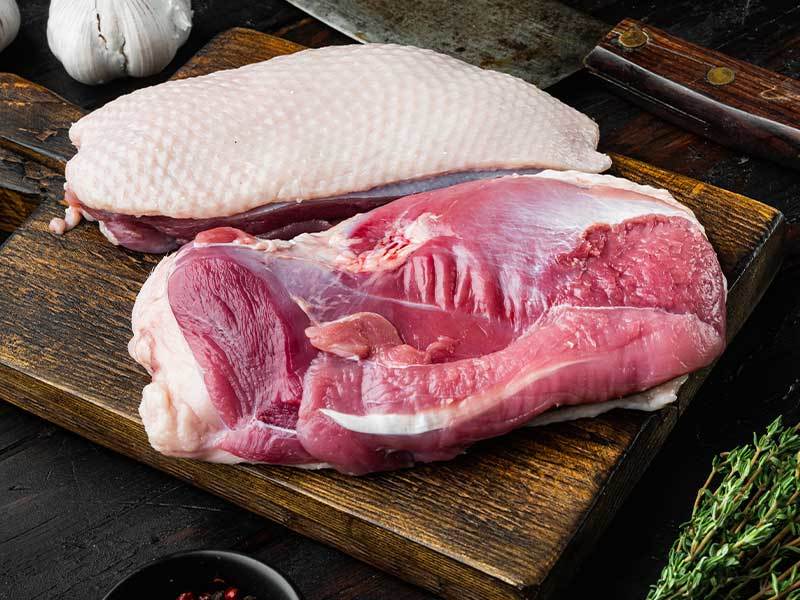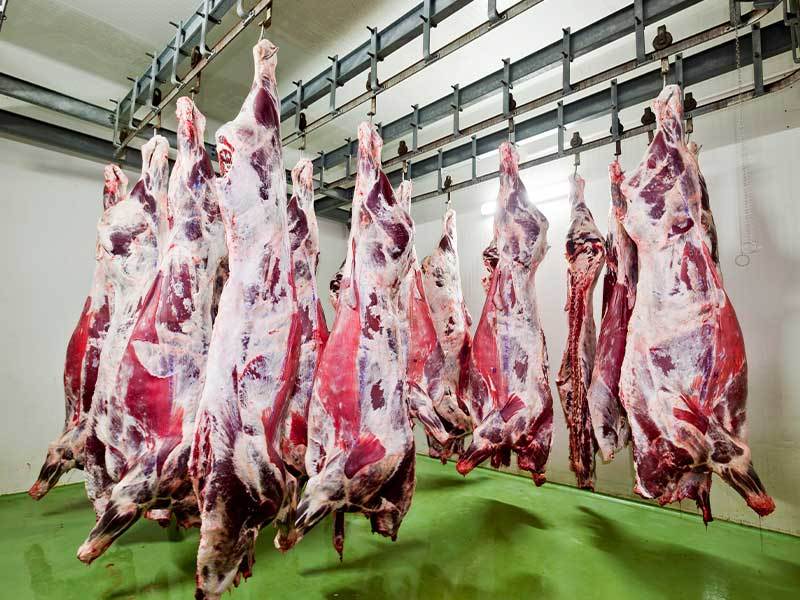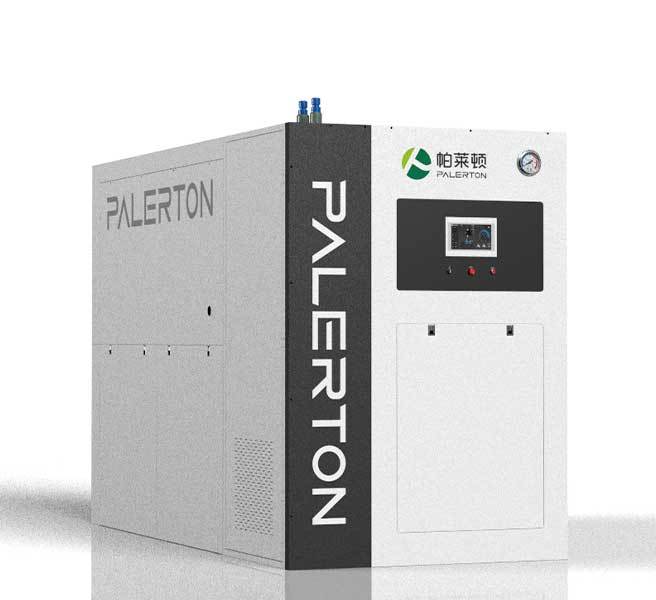
The role of steam generators in slaughterhouse production
The efficient and safe production of slaughterhouses is inseparable from the coordinated operation of various equipment, among which the steam generator is the hero of the production line. With its unique performance advantages, it runs through multiple key links of slaughtering and processing, and escorts the entire production process. In the production process of slaughterhouses, the role of steam generators is mainly reflected in the following aspects. Meat cleaning and disinfection: The high-temperature steam generated by the steam generator can be used to clean and disinfect meat. After slaughter, bacteria, blood and other impurities may adhere to the surface of meat. Steam cleaning can effectively kill bacteria, reduce microbial contamination, and ensure the sanitary quality of meat. High-temperature steam can also make it easier to wash away impurities on the surface of meat, improve the cleaning effect, and provide a good raw material basis for subsequent processing links.
Meat cleaning and disinfection: The high-temperature steam generated by the steam generator can be used to clean and disinfect meat. After slaughter, bacteria, blood and other impurities may adhere to the surface of meat. Steam cleaning can effectively kill bacteria, reduce microbial contamination, and ensure the sanitary quality of meat. High-temperature steam can also make it easier to wash away impurities on the surface of meat, improve the cleaning effect, and provide a good raw material basis for subsequent processing links. Equipment and site cleaning: Slaughterhouse equipment and sites need to be cleaned regularly and thoroughly to prevent bacterial growth and cross contamination. The steam generated by the steam generator can be used to clean slaughter equipment, cutting knives, cutting boards, etc. High-temperature steam can quickly soften stubborn stains and blood stains, making cleaning more efficient. At the same time, steam can also disinfect the site, eliminate odors, and create a hygienic and tidy production environment.
Equipment and site cleaning: Slaughterhouse equipment and sites need to be cleaned regularly and thoroughly to prevent bacterial growth and cross contamination. The steam generated by the steam generator can be used to clean slaughter equipment, cutting knives, cutting boards, etc. High-temperature steam can quickly soften stubborn stains and blood stains, making cleaning more efficient. At the same time, steam can also disinfect the site, eliminate odors, and create a hygienic and tidy production environment. Hair scalding and hair removal: Hair scalding and hair removal is an important step in the slaughter of livestock such as pigs and sheep. The steam provided by the steam generator can heat the water to the appropriate temperature, making it easier for livestock hair to fall off. Compared with the traditional hot water hair scalding method, the use of steam heating is more uniform and stable, which can improve the efficiency and quality of hair scalding and hair removal, and reduce the problem of hair residue or skin damage caused by uneven temperature.
Hair scalding and hair removal: Hair scalding and hair removal is an important step in the slaughter of livestock such as pigs and sheep. The steam provided by the steam generator can heat the water to the appropriate temperature, making it easier for livestock hair to fall off. Compared with the traditional hot water hair scalding method, the use of steam heating is more uniform and stable, which can improve the efficiency and quality of hair scalding and hair removal, and reduce the problem of hair residue or skin damage caused by uneven temperature. From controlling meat quality at the source to maintaining a clean production environment, the steam generator, with its high efficiency and environmentally friendly characteristics, fully guarantees the stable operation of the slaughterhouse. With the continuous innovation of technology, it will surely play a more critical role in the future slaughtering industry!
From controlling meat quality at the source to maintaining a clean production environment, the steam generator, with its high efficiency and environmentally friendly characteristics, fully guarantees the stable operation of the slaughterhouse. With the continuous innovation of technology, it will surely play a more critical role in the future slaughtering industry!
Related News
What is the significance of low steam generator flue gas exhaust temperature?
The flue gas exhaust temperature of the Composite chamber micro-superheated steam generator(D class)is stably below 50°C. This outstanding performance makes it show significant advantages in the field of energy conservation and environmental protection. On the one hand, its thermal efficiency is improved to the industry-leading level, which can significantly reduce fuel costs compared with traditional steam equipment; on the other hand, it effectively reduces the thermal pollution caused by high-temperature exhaust to the surrounding environment, and significantly reduces the risk of acid gas condensation corrosion, ensuring the long-term stable operation of the exhaust system. In addition, the equipment meets the national requirements for the promotion of high-efficiency and low-emission equipment, providing strong support for enterprises to improve energy utilization efficiency and reduce operating costs, helping enterprises achieve green and low-carbon development goals.
The role of steam generators in slaughterhouse production
From controlling meat quality at the source to maintaining a clean production environment, the steam generator, with its high efficiency and environmentally friendly characteristics, fully guarantees the stable operation of the slaughterhouse. With the continuous innovation of technology, it will surely play a more critical role in the future slaughtering industry!
The Composite chamber micro-superheated steam generator(D class)redefines the quality and efficiency of steam with cutting-edge technology. Choosing it means choosing a more precise, efficient and stable production experience, opening a new chapter in industrial steam applications!
Composite chamber micro-superheated steam generator(D class)the role of deaeration tank?
The existence of the deaeration water tank is crucial in the pursuit of high efficiency, energy saving and stable operation of the Composite chamber micro-superheated steam generator(D class. It complements other advanced technologies of the equipment to build a reliable steam production system, ensuring that the steam generator can continuously and stably output high-quality steam, meet the stringent requirements of industrial production for steam energy, and provide strong support for the safe production and economic benefits of enterprises.
What are the advantages of using a steam generator for cleaning and disinfecting hospital fabrics?
In addition, the steam generator is easy to operate, safe and reliable. The equipment is equipped with an intelligent control system, and the operator can accurately adjust the steam temperature, pressure and flow through the touch screen or remote control terminal to meet the cleaning and disinfection needs of different fabrics. In addition, multiple safety protection devices (such as overpressure protection, water shortage protection, etc.) can effectively prevent equipment failure, ensure stable operation, and reduce manual maintenance costs and safety hazards.
What is the thermal efficiency of the steam generator ?
At the same time, the quality and thickness of the steam generator's insulation layer determine the amount of heat loss. Good insulation can reduce the heat dissipation of the equipment to the external environment, allowing more heat to be used to generate steam and improve thermal efficiency. If the insulation layer is damaged or the thickness is insufficient, a large amount of heat will be lost, reducing the thermal efficiency of the equipment.



